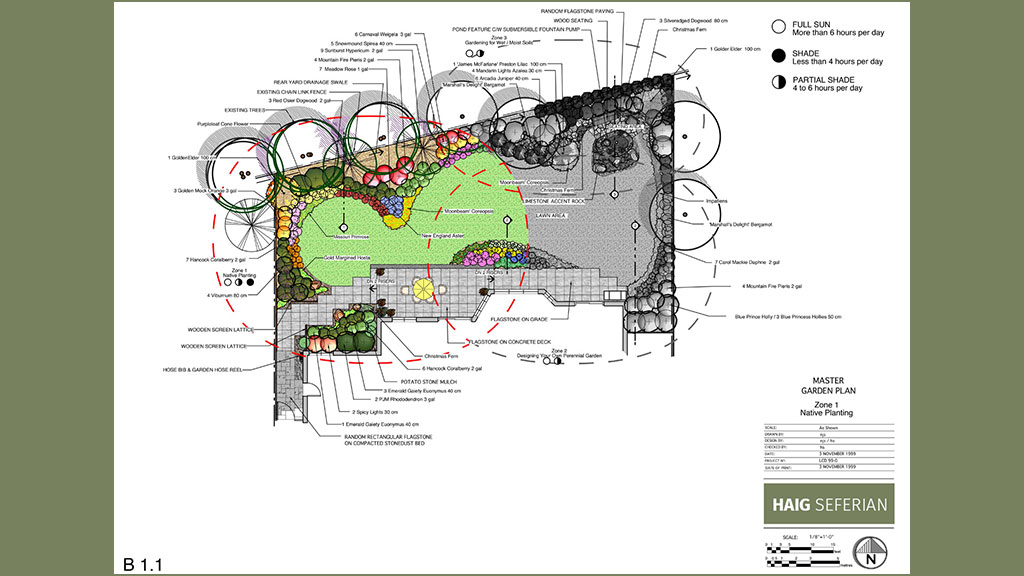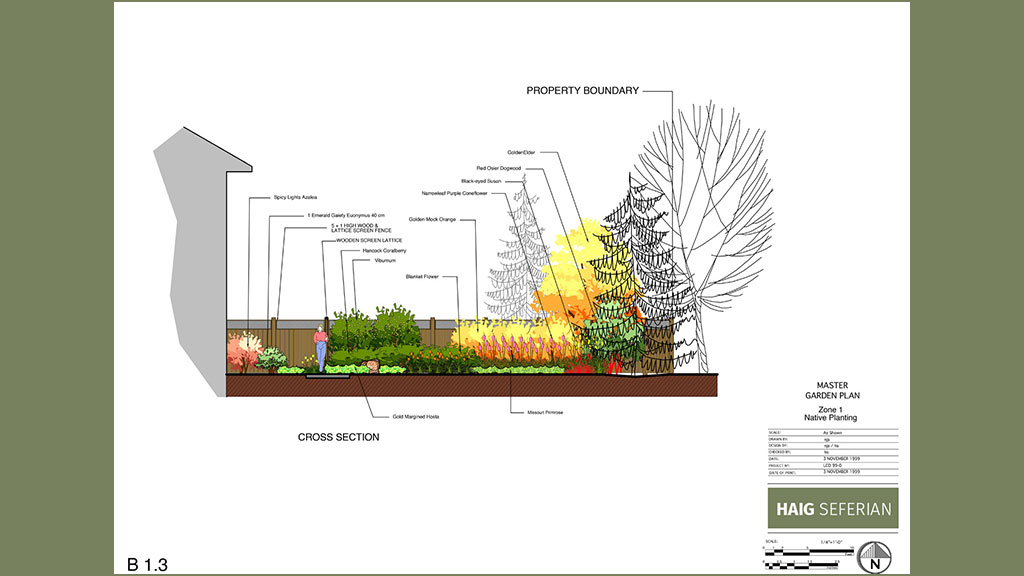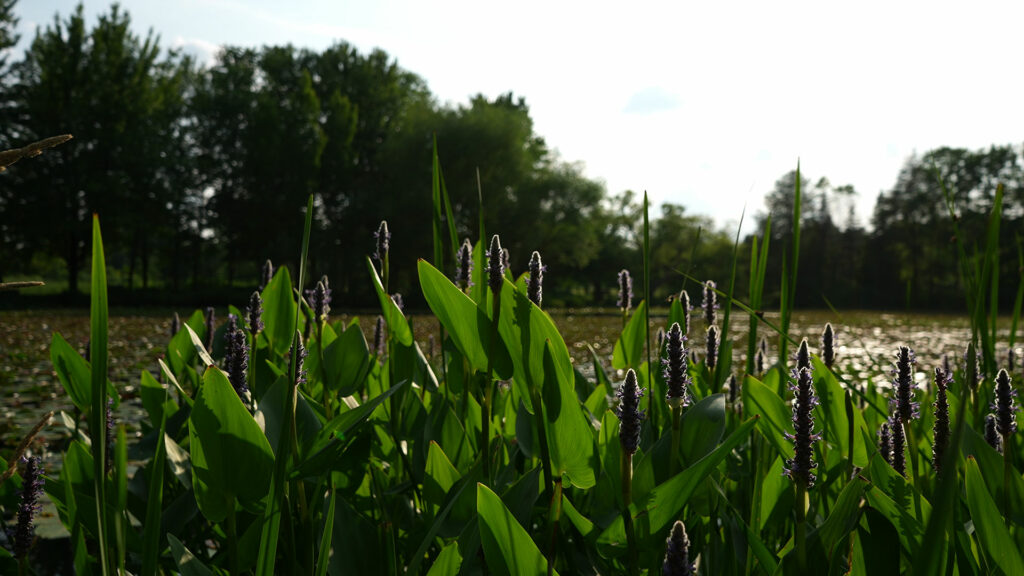There are many types of gardens we derive pleasure from and the most overlooked one, which is slowly gaining in popularity, is the natural garden. As we long to be one with nature, the art of landscaping with native plants affords us the opportunity to co-exist and live harmoniously within our surroundings.
Gardens don’t always have to be harnessed or uptight. We can loosen our reigns and allow for the free and natural movement of plants indigenous to our area to unfold us. Sometimes its refreshing to allow plants to grow together and go wild. A free-flowing natural garden can be created right in your back or front yard. It is important to note that a natural garden does not mean no maintenance – it means low maintenance.

The major benefit of a natural garden is the composition of easy-to-maintain plants that are well adopted to the area. Plantlife indigenous to the area is better equipped to handle local climate and soil conditions. After all, they have been adapting to it for years. In addition , trees, shrubs and flowers that occur naturally are more resistant to local disease and pests than highly bred exotic species. Native landscaping allows for healthier and stronger growth of plants in addition to requiring less time and money to maintain. After all, such plant life does not receive any additional moisture apart from rain, or any fine manicuring in the depths of the forest where trees and shrubs are not cut into artificial shapes, but allowed to develop naturally.

A word of caution, some natural gardens can be ignored completely and allowed to go into total disarray. Generally, neighbours are not appreciative of this level of neglect. Therefore, bear in mind that a certain amount of maintenance is still required, although considerably less than other types of gardens.
To start planning your native garden, take a good look around you to see what grows naturally. You can also take a trip to your local garden centre to get an idea of the many perennial plants local to your area. Remember that carefully selected native perennials can provide a palate of colours all season long.
It’s a good idea to lay out your native plant material before planting. Clumps of plantings will look more natural for a garden of this type, than single plants scattered all over. You can afford to be bold in your plantings by placing them in broad, sweeping masses for further drama.
Lay them out in huge swaths with varying heights of both colour and texture, maximizing proportions. By incorporating layers of vegetation, you can achieve a truly natural look. Combining large and small trees, evergreens and ground cover will create an attractive, low maintenance garden. As you can see even gardens that look thoughtlessly natural require careful planning.
Native planting also invites natural wildlife to your garden, such as birds and butterflies and further enhances the beauty and appreciation of your surroundings. This follows the trend of more environmentally friendly gardens, minimizing the use of water (definitely a limited resource) while nurturing and encouraging wildlife.

For further inspiration in creating your own natural garden, you can visit some of the local gardens in Southern Ontario. A few examples are:
Ecology Park
12 Madison Avenue, Toronto
Gosling Wildlife Garden, JC Taylor Nature Centre,
The Arboretum, University of Guelph
Robert Starbord Dorney Ecology Garden,
University of Waterloo
Naturalized Parks in North York,
Toronto ( Parks and Recreation
George W., North Memorial Wildlife Garden,
Royal Botanical Gardens, Hamilton
Here are some examples of plantings indigenous to Southern Ontario:
EVERGREENS
| White Pine | Pinus Strobus |
| White Cedar | Thuja Occidentalis |
| Balsam Fir | Abies Balsamea |
| White Spruce | Picea Glauca |
| Eastern Hemlock | Tsuga Canadensis |
SHADE TREES
| Red Oak | Quercus Rubra |
| Pin Oak | Quercus Palustris |
| Paper Birch | Betula Papyrifera |
| Red Maple | Acer Rubrum |
| Sugar Maple | Acer Saccharum |
| Silver Maple | Acer Saccharinum |
| Butternut | Juglans Cinerea |
| Shagbark Hickory | Carya Ovata |
SMALL TREES
| Serviceberry | Amelanchier Alternifolia |
| Red Mulberry | Morus Rubra |
| American Mountain Ash | Sorbus America |
| Staghorn Sumac | Rhus Typhina |
| Nannyberry | Viburnum Lentago |
| Redbud | Cercis Canadensis |
SHRUBS
| Red Osler Dogwood | Cornus Sericea |
| Gray Dogwood | Cornus Stolonifera |
| Honeysuckle | Lonicera |
| Winterberry Holly | Ilex Verticillata |
| American Hazel | Corylus Americana |
VINES AND GROUNDCOVERS
| Bittersweet | Celastris Scandens |
| Trumpet Vine | Campsis Radicans |
| Bearberry | Arctostaphylos Uva-Ursi |
| Bunchberry | Cornus Candensis |
One other benefit to a natural landscape is you will find that you will attract birds, butterflies or other wildlife to your garden. All in all there are a great many advantages to a natural garden that you, your neighbours and local wildlife will enjoy year round.

